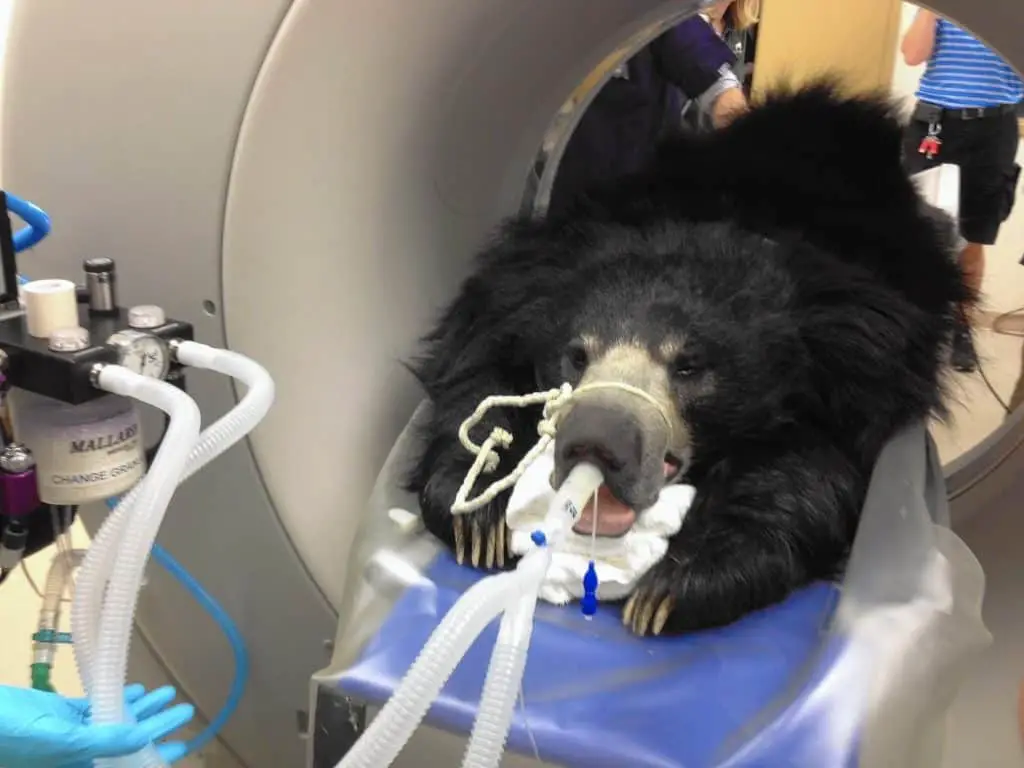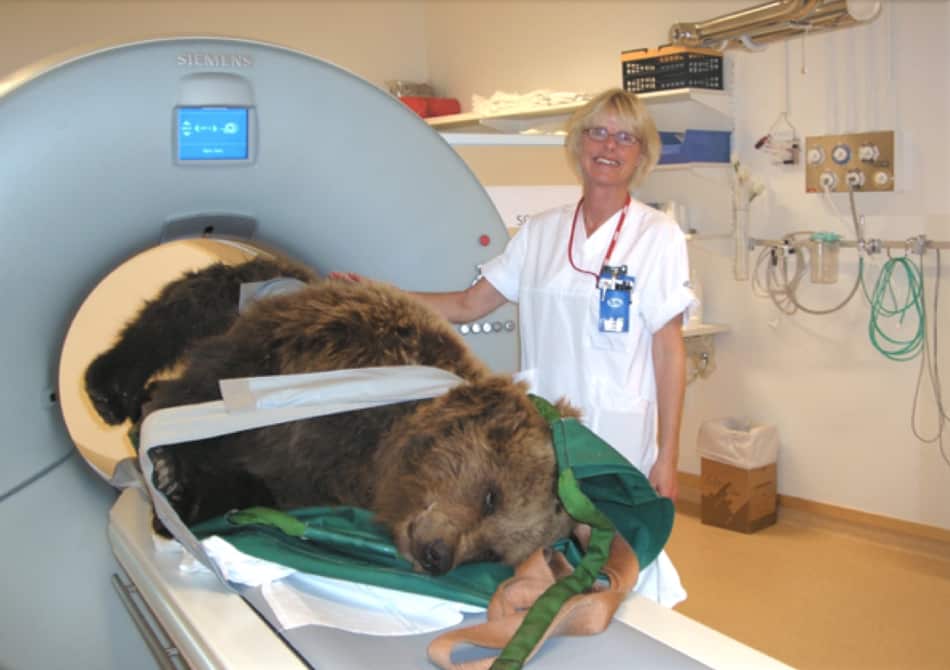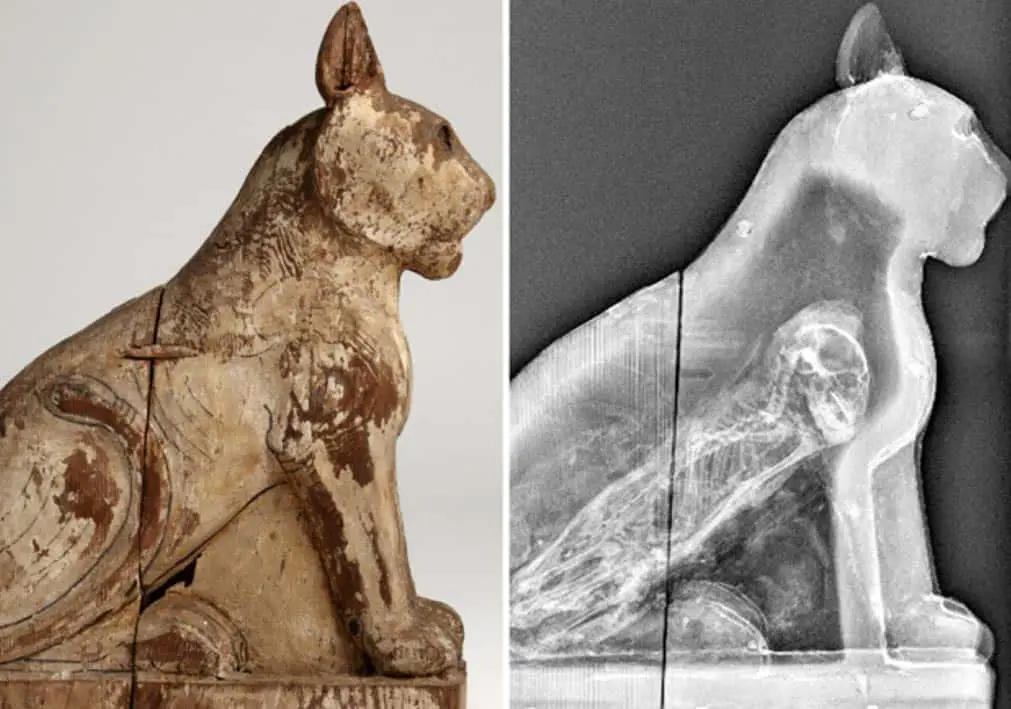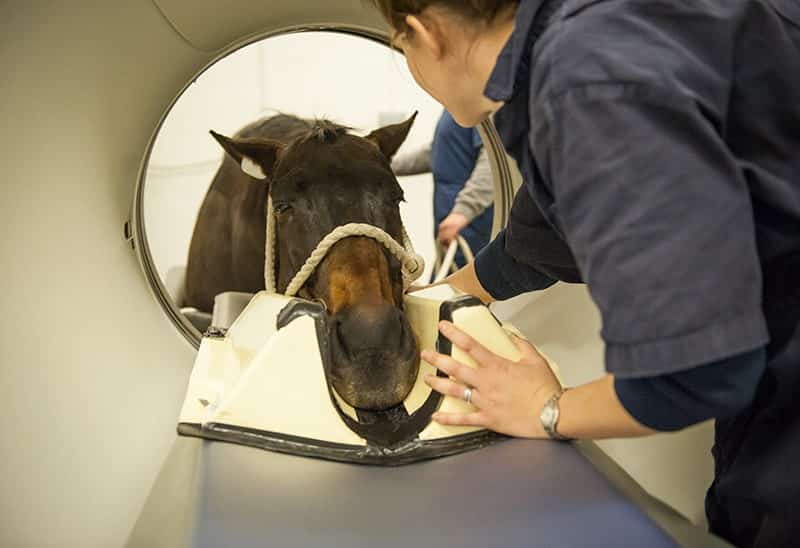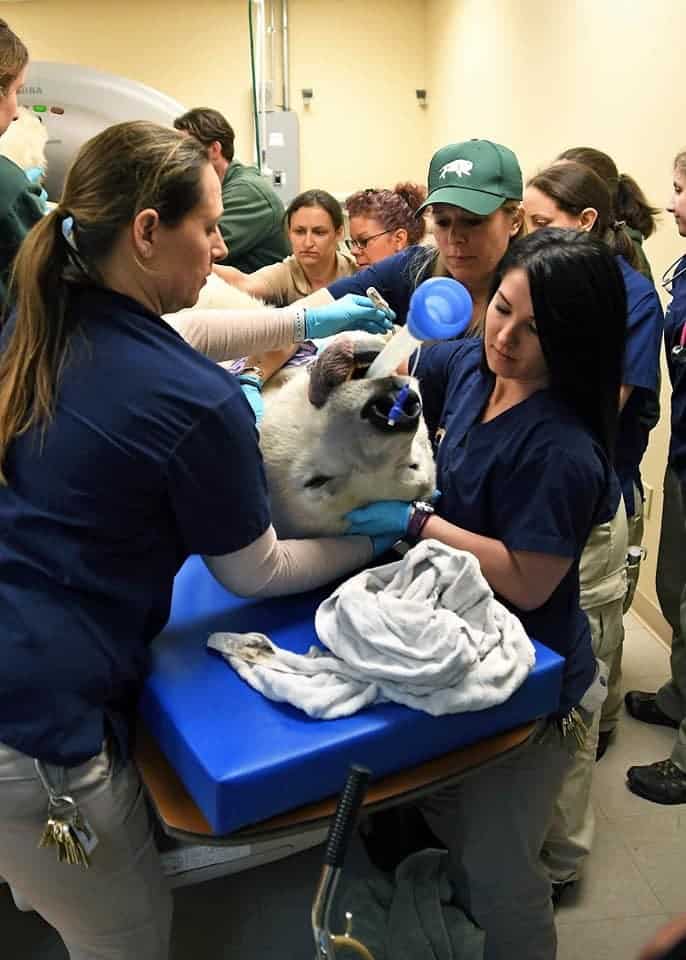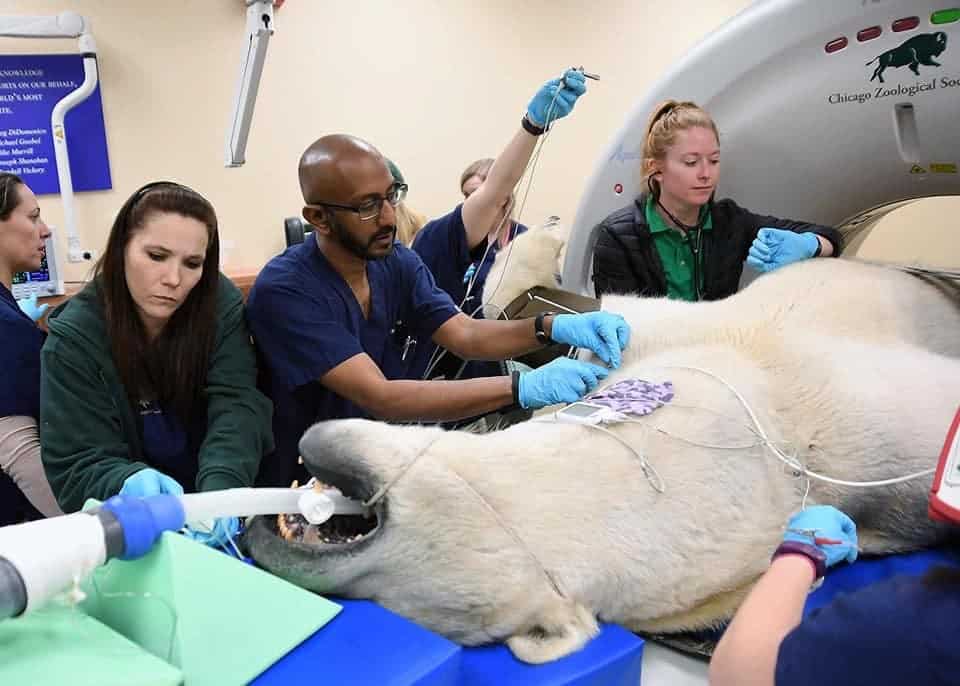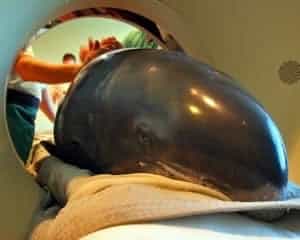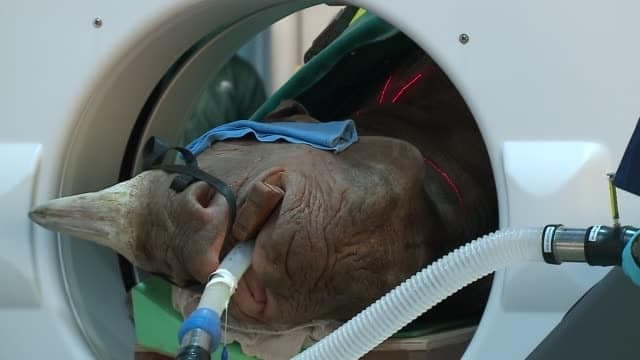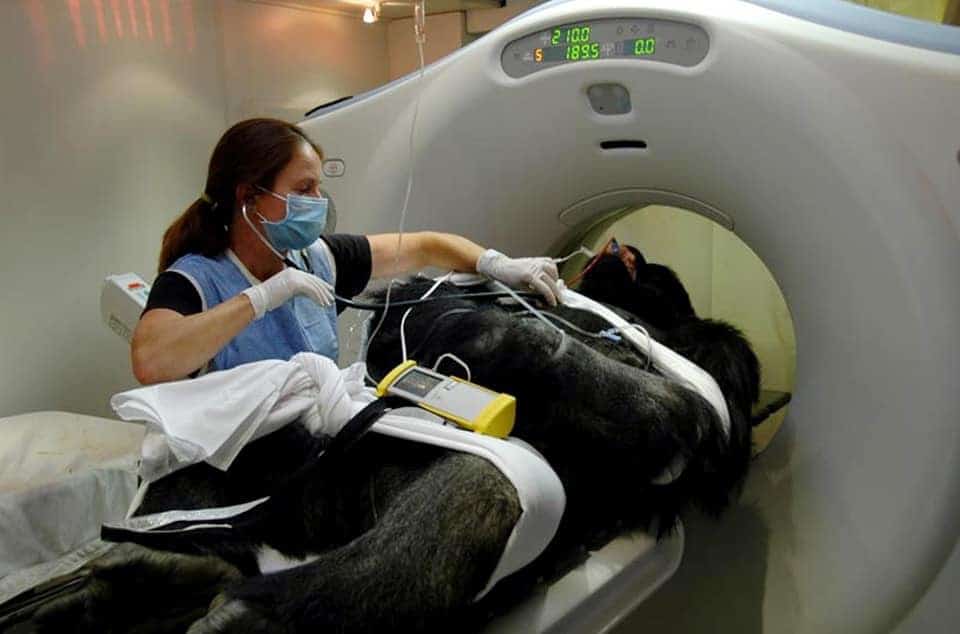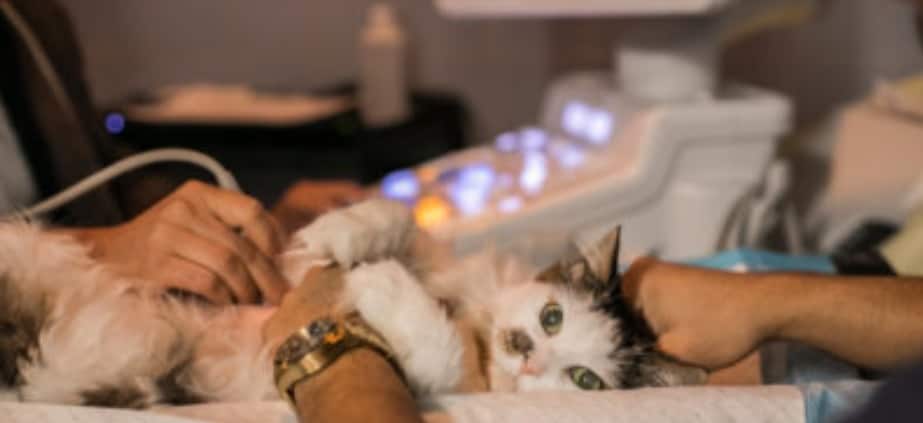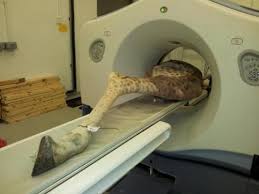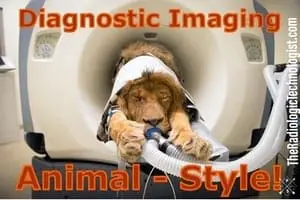The other day, I came across some wonderful images on the internet of numerous zoo animals undergoing medical imaging. I was so fascinated with them that I shared them on social media.
By the end of the day, the post has shared over 100 times and had thousands of views and comments. Humans enamor with our four-legged (and other) friends. So I did some further research.
What is Veterinary Diagnostic Imaging?
- We can use Diagnostic imaging equipment such as MRI and CT scanners, ultrasound machines, and Nuclear Medicine and PET scans on animals, birds, and reptiles. The same methodology diagnoses humans but with a different protocol for acquiring the necessary views.
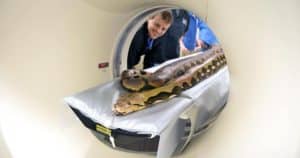
X-rays for ill and injured animals are common at most larger veterinary offices. These days, computed tomography (CT), nuclear imaging, ultrasound, digital fluoroscopy, nuclear imaging, and magnetic resonance imaging (MRI) diagnose animal injury and disease.
Diagnostic imaging teaches physicians of veterinary medicine at large teaching hospitals around the country. Thanks to an increasing number of specialty veterinary clinics purchasing expensive equipment, more jobs for technicians and technologists to work with the docs are beginning to open up.
What is Veterinary Radiology?
- Just like their human counterparts, animals need medical care too. Veterinary radiology is a subspecialty of veterinary medicine that focuses on diagnostic imaging to investigate the underlying cause of disease.
As the comment kept pouring on my LinkedIn and Facebook posts, one overarching theme could be detected: “How can I do that?!” In the world of diagnostic imaging, technologists are constantly working hard to deliver the best quality images to help physicians determine the root of the patient’s problems.
An often thankless job, but we keep returning for more because that is what thrills us. Capturing the best images while working with difficult circumstances.
How Can I Get Into Veterinary Imaging?
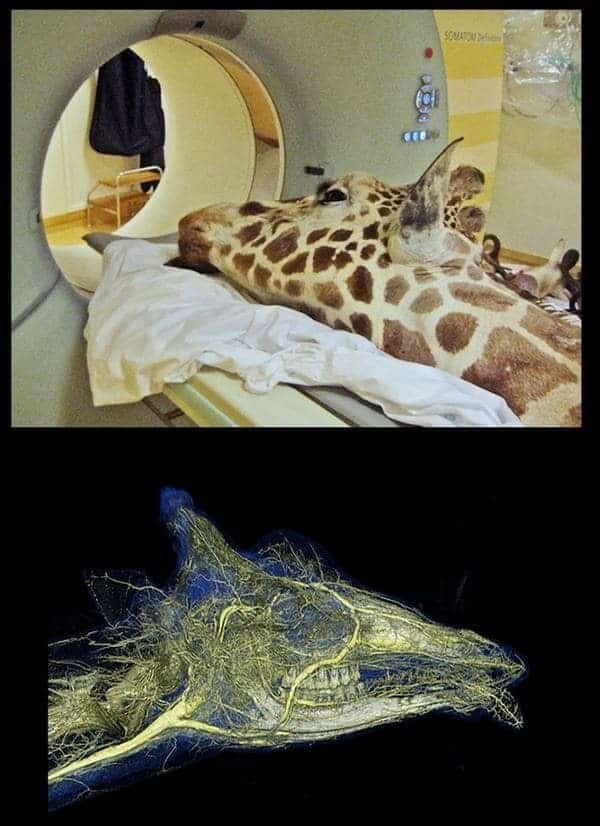
I have some information for those interested in expanding their skill sets to include imaging animals. Here is some insight from a veterinarian radiologist and his two cents on the topic of breaking into the field of veterinary diagnostic imaging:
“Most veterinary schools will employ one or two radiologic technologists in their radiology department. So will the largest veterinary specialty hospitals with a dedicated radiology department. But on average, there is one veterinary school for every two states. The largest urban centers will have maybe one or two veterinary hospitals with radiologists.
That said, there is a nationwide shortage of veterinary technicians. Radiology is one of a very few specialties where human medicine crossover is possible so even if you cold-call a department they will at least give you a second look.
If you look up the websites of most veterinary teaching & specialty hospitals, you can find a Career Page with open positions listed. One advantage rad techs have is that there is minimal regulation in veterinary medicine, so you don’t need to have a licensed in a particular modality to operate it.
For example, my hospital has an RT(R) who does X-ray, CT, and MRIs. So it’s a good option if you want a little diversity, both in species and modality.”
What Qualifications Would I Need to be a Rad Tech in Vet Medicine?
The entry point into veterinary radiology is usually from the human medicine side, as advanced courses in radiography for veterinary technicians are limited, and training is usually completed on the job.
Moreover, Most veterinary technicians, who complete a two-year or four-year course, are trained to do general X-rays and sometimes other medical imaging like ultrasound.
There is no specific specialized certification for vet techs to do imaging. Still, radiologic technologists who graduate from an accredited school can transfer their skills to animals and be imaging experts. It’s an extra arrow in your quiver that should make for a smoother transition into the veterinary medicine field.
If you are a radiologic technologist interested in finding work in veterinary medicine, there is one attribute you need… you have to like animals. It may seem obvious, but not everyone has the skillset needed to work with animals. Animal handling skills can be taught, but only if you have a predisposition to like animals.
Some of the leading veterinary teaching hospitals include:
- Ethos Teaching Hospital
- VCA Hospitals
- Animal Medical Center
- Washington State Teaching Hospital
- VetMed at Auburn
Veterinary diagnostic imaging sounds like a perfect fit for an animal-loving radiologic technologist. I hope this information helps spur you into exploring all the great things out there for rad techs. If you already work in the field, feel free to leave a comment below and tell us what your experience has been working in the field of veterinary medicine.
Here are a few more animal imaging pictures I have found:
